» Home
» About
» Membership
» Journal
» Sparoza Garden
» Branches
» MGS Forum
» Seed Exchange
» Donations
» MGS Excursions
» Information
» Members' Gardens
» Book Reviews
» News & Views
» Contact
» Search
|
A Garden in Umbria, Italy
In 1997 my husband and I bought a ruined farmhouse in Northern Umbria, Italy and, after having it restored, moved to it permanently in the summer of 1998. It stands in approximately two and a half hectares on a slightly sloping site on the eastern side of one of several valleys that run in a north/south direction from the Upper Tiber valley. Woodland gives some protection on three sides but to the north it is more open to cold Tramontana winds. Much of the land was farmed up to our purchase but the house had been abandoned since the late 1940s and the areas adjacent to the buildings were overgrown with brambles, blackthorn, dogwood (Cornus sanguinea), old man's beard (Clematis viticella) and a wonderful assortment of wild flowers some of which I have gladly incorporated into the garden. During the restoration these areas also suffered from compaction and the dumping of builder's rubbish.
The soil is alkaline clay with underlying seams of rock in some places. Although reasonably fertile it dries and cracks during the hot summers and can be prone to waterlogging in some ares during wet periods. Winters can be long and cold (we have recorded -8°C on occasions) and, being situated at about 500m above sea level, we experience snow most years.
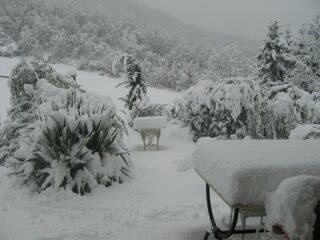
Spring can be quite short with temperatures usually rising steadily from early May, bringing long, dry days until the end of August. Seasonal storms at this time bring welcome relief and autumn is usually mild until at least mid-November. Our average rainfall is about 800mm but it is seasonal and so during the restoration I made provision to collect rainwater from the roof. From one side it is channelled to a large, purpose-built underground holding well close to the house. Our innovative builders managed to make this into a pleasing water feature using old roof edging tiles.
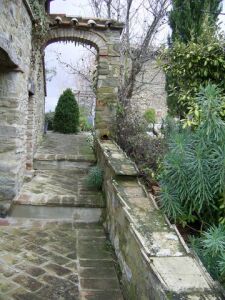
A small pump, inside the well, re-cycles the water when it is not raining. From the other side of the roof rainwater is conveyed through hidden pipes to two, above ground, tanks situated lower in the garden. This water was invaluable as we developed the garden and is now just used for fruit trees/bushes when necessary and for the daily watering of pots where I grow more tender subjects. Regular watering of new plantings is both arduous and time-consuming and so I developed the garden very much area by area but always with a "master-plan" in mind. I wanted the garden, once established, to be self-sustaining and in particular to be able to cope with the hot, dry summers. My philosophy for creating a successful garden is contained in three basic rules that have held me in good stead here.
- Prepare the ground as well as possible - eradicate all weeds and add humus, grit, gravel etc as appropriate.
- Choose the correct planting material for the prevailing conditions - plants adapted to the soil, climate will flourish more readily.
- Give good care to all new plantings - the establishment of a good root system is crucial to future health. I always plant small so that the roots and top growth are co-ordinated and, smaller subjects require less water. Mulching at this time also helps to conserve moisture in hot weather. I use gravel extensively as it also protects against excess wet during the wetter months. If different sizes and colours are used this can become a pleasing feature of the garden.
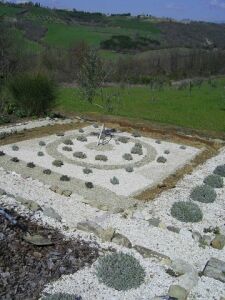
For me, patience is the greatest virtue a gardener can possess. A garden is a living and growing thing and cannot be created overnight. Close observation of your plantings and progress will prevent future mistakes as you learn about the vagaries of your plot since no two sites are exactly the same. After nearly twelve years my garden is maturing into something like what I had envisaged when I first contemplated the challenge of gardening in a Mediterranean climate.
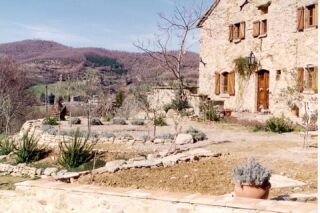
Early days at the front of the house: olives planted as two year-olds.
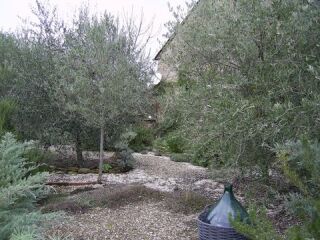
Front of house now.
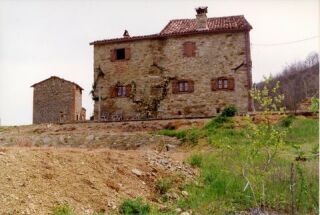
Side of house looking from where pool is now.
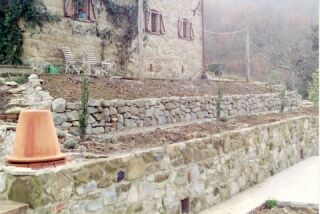
Preparation with interim dry stone wall and path.
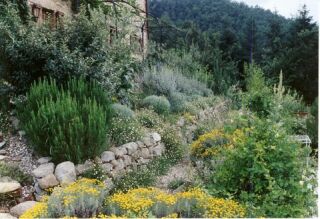
Springtime now:- Elaeagnus x ebbingei, Rosmarinus officinalis, Teucrium fruticans,
Santolina chamaecyparissus, Lonicera japonica ‘Halliana’, Verbascum thapsus (self-sown).
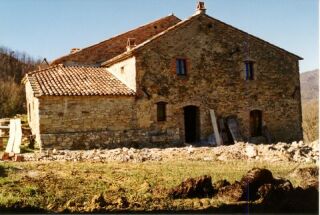
Back of house as we found it.
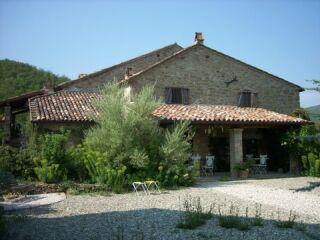
Several years on:- Elaeagnus umbellata, Euphorbia characias.
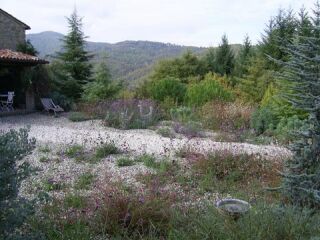
Looking forward, high summer: Cedrus deodara (easy and quick growing),
Verbena bonariensis and Gaura lindheimeri happily colonising shingle.
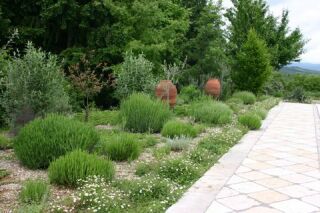
Pool border: (the soil is virtually all sub-soil from the excavation of the pool.)
Spring with Erigeron karvinskianus already in flower.
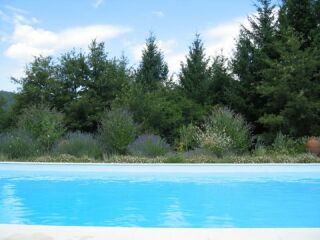
Summer, lavender, Gaura, Buddleja davidii ‘Black Knight’, Verbena and
Erigeron still going strong.
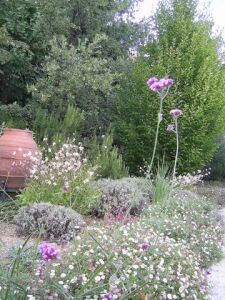
Autumn, the lavender trimmed but Gaura, Verbena and Erigeron still flowering.
The hornbeam to right side of photo is easy and fast-growing. The mats of green in the
border are Juniperus horizontalis, a wonderful green ground cover.
|


